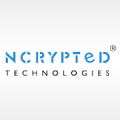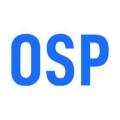Unlocking Seamless Collaboration: The Power of Epic Integration
In today's fast-paced world of healthcare, seamless collaboration and efficient data management are paramount. Electronic health record... View MoreUnlocking Seamless Collaboration: The Power of Epic Integration
In today's fast-paced world of healthcare, seamless collaboration and efficient data management are paramount. Electronic health record (EHR) systems play a crucial role in streamlining patient care processes, and Epic Systems Corporation stands out as a leader in this domain. However, to truly maximize its potential, Epic integration with other healthcare systems is essential.
Understanding Epic Integration
Epic integration refers to the process of connecting Epic's EHR platform with other healthcare systems, such as laboratory information systems (LIS), picture archiving and communication systems (PACS), pharmacy systems, billing systems, and more. This integration enables the exchange of data and information across different platforms, facilitating comprehensive patient care and enhancing operational efficiency.
Benefits of Epic Integration
Comprehensive Patient Information: Integration allows healthcare providers to access comprehensive patient information in one centralized location. This includes medical history, diagnostic test results, medications, allergies, and more. Having a complete view of the patient's health status enables better-informed decision-making and improves the quality of care.
Streamlined Workflows: By integrating Epic with other systems, healthcare organizations can streamline workflows and eliminate redundant data entry tasks. For example, laboratory results can be automatically populated into the patient's EHR, reducing the need for manual data entry and minimizing the risk of errors.
Enhanced Patient Safety: Integration ensures that accurate and up-to-date information is readily available to healthcare providers at the point of care. This helps prevent medication errors, adverse reactions, and other patient safety issues. Additionally, integration enables real-time alerts and notifications, ensuring timely intervention when necessary.
Improved Efficiency and Productivity: Integrating Epic with other systems improves operational efficiency and productivity within healthcare organizations. Clinicians spend less time navigating between different systems and searching for patient information, allowing them to focus more on delivering care. Administrative processes, such as billing and coding, are also streamlined, leading to faster reimbursement and revenue cycle management.
Better Data Analytics and Reporting: Integration enables the aggregation of data from various sources, allowing for comprehensive data analysis and reporting. Healthcare organizations can leverage this data to identify trends, measure outcomes, and make data-driven decisions to improve patient care and organizational performance.
Challenges and Considerations
While the benefits of Epic integration are substantial, there are challenges and considerations that healthcare organizations must address:
Interoperability: Ensuring seamless communication and data exchange between Epic and other systems requires robust interoperability standards and protocols. Healthcare organizations must invest in interoperability solutions to overcome compatibility issues and ensure smooth integration.
Data Security and Privacy: Integrating multiple systems increases the complexity of data security and privacy management. Healthcare organizations must implement stringent security measures to protect patient data from unauthorized access, breaches, and cyber threats.
Customization and Configuration: Epic integration often requires customization and configuration to meet the specific needs and workflows of healthcare organizations. It's essential to work closely with Epic consultants and IT professionals to tailor the integration process and optimize system performance.
Change Management: Introducing new systems and workflows through integration requires effective change management strategies. Healthcare providers and staff need proper training and support to adapt to the changes and maximize the benefits of integration.
Conclusion
Epic integration holds immense potential to revolutionize healthcare delivery by facilitating seamless collaboration, improving patient care, and enhancing operational efficiency. By connecting Epic with other systems, healthcare organizations can unlock a wealth of benefits, from comprehensive patient information to streamlined workflows and better data analytics. However, successful integration requires careful planning, robust infrastructure, and a commitment to interoperability and data security. With the right approach, Epic integration can pave the way for a more connected and efficient healthcare ecosystem, ultimately improving outcomes for patients and providers alike.
Source:
https://www.osplabs.com/epic-integration/
Epic Integration - Osplabs
Enhance your healthcare operations with EPIC Integration Services. Harness the power of Epic EHR integration to drive better patient outcomes and increase efficiency of healthcare practices.
Healthcare Software Development
Healthcare software development plays a pivotal role in transforming the healthcare industry by offering numerous benefits. Firstly, it enhances efficiency through str... View MoreHealthcare Software Development
Healthcare software development plays a pivotal role in transforming the healthcare industry by offering numerous benefits. Firstly, it enhances efficiency through streamlined processes, reducing administrative overhead and paperwork. It also improves patient care by enabling quicker access to medical records and data, enhancing diagnostic accuracy and treatment planning.
Moreover, healthcare software promotes data security and compliance with stringent regulations, safeguarding sensitive patient information. Telehealth and remote monitoring solutions have become more accessible, allowing for convenient patient-doctor interactions and continuous health monitoring. Additionally, predictive analytics and AI-powered tools aid in early disease detection and resource optimization, ultimately leading to cost savings for healthcare providers. In essence, healthcare software development empowers the industry to deliver better care, improve patient outcomes, and drive operational excellence.
Source:
https://www.osplabs.com/custom-healthcare-software-development/
Custom Healthcare Software Development Solutions - Osplabs
OSP can build a wide range of Healthcare Software Solutions to help you deliver high-quality care virtually. We Integrate technologies with HIPAA compliance.
Streamlining Healthcare Coding Systems: A Vital Solution for EHR Billing and Coding
In the ever-evolving landscape of healthcare, efficient and accurate coding systems are essential to ensure smooth ... View MoreStreamlining Healthcare Coding Systems: A Vital Solution for EHR Billing and Coding
In the ever-evolving landscape of healthcare, efficient and accurate coding systems are essential to ensure smooth operations and proper reimbursement. Healthcare providers, insurance companies, and patients rely on these codes to manage medical records, process claims, and facilitate billing. The integration of Electronic Health Records (EHR) has further emphasized the need for a comprehensive healthcare coding solution to optimize the billing and coding processes.
Healthcare Coding Systems: The Backbone of Medical Documentation
Healthcare coding systems, including the widely used International Classification of Diseases (ICD) and Current Procedural Terminology (CPT) codes, play a pivotal role in medical documentation. These codes help healthcare professionals classify diseases, diagnoses, and medical procedures consistently and accurately. They are instrumental in streamlining medical billing and ensuring that healthcare providers are fairly compensated for their services.
Challenges in EHR Billing and Coding
The transition to EHRs has brought about significant improvements in patient care and record-keeping. However, it has also presented challenges in the billing and coding process. Inefficient coding practices can lead to errors, claim denials, and financial losses for healthcare organizations. Common challenges in EHR billing and coding include:
Data Integration: EHR systems must seamlessly integrate with coding software to ensure that the correct codes are assigned to diagnoses and procedures.
Training and Compliance: Healthcare staff must be adequately trained to use EHR systems and coding software compliantly, which can be a complex task due to the evolving nature of coding regulations.
Data Security: Protecting patient data is paramount. EHR billing and coding solutions must adhere to strict security standards to safeguard sensitive information.
The Role of Healthcare Coding Solutions
To address these challenges, healthcare organizations are increasingly turning to healthcare coding solutions that are designed to work seamlessly with EHR systems. These solutions offer several benefits:
Automation: Healthcare coding solutions use advanced algorithms and machine learning to automate the coding process. This reduces the risk of human error and ensures accurate code assignment.
Integration: They seamlessly integrate with EHR systems, making it easier for healthcare professionals to code diagnoses and procedures directly from patient records.
Real-time Updates: These solutions stay up-to-date with the latest coding regulations and guidelines, ensuring compliance and reducing the risk of claim denials.
Increased Efficiency: By streamlining the coding process, healthcare coding solutions improve efficiency, reduce administrative burden, and help healthcare providers focus more on patient care.
Enhanced Data Security: They prioritize data security, protecting sensitive patient information in accordance with healthcare industry standards.
In conclusion, healthcare coding systems are the backbone of medical documentation, and their integration with EHR systems is essential for efficient billing and coding. Healthcare coding solutions offer a viable way to address the challenges posed by EHR billing and coding, providing automation, integration, compliance, efficiency, and data security. Embracing these solutions not only benefits healthcare organizations but also ensures accurate coding and better patient care, ultimately improving the overall healthcare experience.
Source:
https://www.osplabs.com/medical-billing-solutions/medical-coding-software-solutions/
Medical Coding Software Solutions - Osplabs
Develop tailored medical billing and coding software to make medical coding process easy, simple, and intuitive for solo to large care practices.
What is Remote Patient Monitoring
Programs, methods, and protocols for remote patient monitoring are becoming more and more widespread, supported by a growing body of clinical research and a wide ran... View MoreWhat is Remote Patient Monitoring
Programs, methods, and protocols for remote patient monitoring are becoming more and more widespread, supported by a growing body of clinical research and a wide range of non-clinical advantages. Amongst all custom healthcare software solutions, remote patient monitoring systems are the most preferred one. RPM healthcare solutions enable practitioners to treat both acute and chronic diseases by monitoring patients between clinic visits or in situations when in-person treatment is challenging.
Moreover, EMR integration with remote patient monitoring gives clinicians the ability to monitor patients almost in real-time, collect the necessary data, and adjust and improve care outcomes, which is especially useful for chronic care. Patients who require ongoing care, such as those with diabetes, heart issues, asthma, hypertension, mental disease, and, more recently, protracted COVID, or the symptoms that persist after COVID-19 infection and recovery, can benefit from this kind of continual tracking. Besides, weight scales, pulse oximeters, blood glucose meters, blood pressure monitors, heart monitors, and even specific monitoring for dementia and Parkinson’s disease are all included in remote health monitoring programs.
Moreover, wearables are a different class of remote patient monitoring devices that can be used to monitor patients’ health over time. They can include more geared toward the general public gadgets like smartwatches and continuous blood glucose monitoring. According to Deloitte’s forecast, over 320 million consumer health and wellness wearable devices would ship globally in 2022, with wearables seem to be particularly more in demand. By 2024, that number might increase to 440 million units shipped.
Perhaps remote monitoring in healthcare can also be used to treat more urgent and acute symptoms, making it effective for controlling long-term illnesses as well. RPM solution is also used for hospital-at-home programs. Hospital-at-home programs are being established by healthcare organizations more frequently to allow patients to receive treatment for more serious diseases at home. These programs can offer a wide range of services, including X-rays and echocardiograms for diagnostic purposes, oxygen therapy and intravenous fluids for treatment, as well as skilled nursing and pharmaceutical services. Besides, these programs include in-person care, but they are also supported by telemedicine visits and ongoing biometric monitoring by a care team.
Also, when patients have been released to their homes following surgery, remote health tracking can be employed to monitor their recovery. Take for example, patients undergoing heart procedures in a health facility are usually offered a post-surgery RPM program. Patients who participate in the program use devices included in a kit to communicate a variety of biometric data to their care team, such as heart rate, blood pressure, and blood oxygen levels. This data can be monitored by the team to make sure the patient is recovering as anticipated.
Overall, health systems are using telemedicine remote patient monitoring more frequently to treat patients with a variety of diseases, including diabetes, hypertension, and COVID-19. Even the Centers for Medicare and Medicaid Services’ regulatory modifications have strengthened this tendency. This shows how remote healthcare monitoring is growing in importance as a component of delivering quality healthcare.
Source:
https://www.osplabs.com/remote-patient-monitoring-system/
Remote Patient Monitoring System - Osplabs
Build advanced remote patient monitoring solutions with advanced RPM technology to monitor health vitals in real-time and improve patient outcomes.
Medical credentialing, often referred to as healthcare provider credentialing, is a vital process in the healthcare industry. It plays a crucial role in ensuring that healthcare providers are qualifie... View MoreMedical credentialing, often referred to as healthcare provider credentialing, is a vital process in the healthcare industry. It plays a crucial role in ensuring that healthcare providers are qualified, competent, and meet the necessary standards to deliver safe and effective patient care. This article explores the significance of medical credentialing and its impact on healthcare quality and patient safety.
What is Medical Credentialing?
Medical credentialing is a systematic process that healthcare organizations, such as hospitals, clinics, and insurance companies, use to verify the qualifications and professional backgrounds of healthcare providers. These providers include physicians, nurses, dentists, pharmacists, and other allied healthcare professionals. The goal of credentialing is to confirm that healthcare practitioners possess the necessary education, training, licensure, and experience to deliver quality care to patients.
The Credentialing Process
The credentialing process typically involves several key steps:
Application: Healthcare providers submit detailed applications, including their educational history, training, licensure, certifications, and work experience.
Primary Source Verification: Credentialing staff verify the information provided by the healthcare provider directly from primary sources, such as medical schools, licensing boards, and previous employers.
Peer Review: A committee of experienced healthcare professionals may review the provider's qualifications and performance to assess their competence and ethical standards.
Ongoing Monitoring: Credentialing is not a one-time event. It involves ongoing monitoring to ensure that healthcare providers maintain their qualifications, licensure, and compliance with industry standards.
The Importance of Medical Credentialing
Patient Safety: One of the primary reasons for medical credentialing is to protect patient safety. Ensuring that healthcare providers are qualified and competent reduces the risk of medical errors and adverse outcomes.
Quality of Care: Credentialing helps maintain a high standard of care by ensuring that healthcare providers stay up-to-date with their education, training, and best practices in their respective fields.
Legal and Regulatory Compliance: Medical credentialing is often required by law and regulatory bodies to ensure that healthcare providers meet the necessary standards to practice medicine.
Insurance Reimbursement: Insurance companies often require credentialing to confirm that providers are eligible for reimbursement, which is essential for the financial sustainability of healthcare practices.
Trust and Confidence: Patients and their families trust that healthcare providers have undergone a thorough credentialing process, which instills confidence in the care they receive.
Conclusion
Medical credentialing is a critical component of healthcare quality assurance and patient safety. It ensures that healthcare providers are qualified, competent, and adhere to the highest ethical and professional standards. By maintaining a robust credentialing process, healthcare organizations and regulatory bodies play a vital role in maintaining the integrity and excellence of healthcare services. Ultimately, medical credentialing is a cornerstone of a safe and effective healthcare system.
Source:
https://www.osplabs.com/medical-credentialing/
Medical Credentialing - Osplabs
Develop advanced custom medical credentialing systems for simplified healthcare credentialing and provider enrollment to recapture lost revenue.
Streamlining Healthcare Billing: The Power of Medical Billing Solutions
In today's complex healthcare landscape, efficient medical billing is crucial for healthcare providers and facilities to thrive... View MoreStreamlining Healthcare Billing: The Power of Medical Billing Solutions
In today's complex healthcare landscape, efficient medical billing is crucial for healthcare providers and facilities to thrive. Medical billing involves the process of submitting and tracking insurance claims, as well as managing patient payments. It's a critical aspect of healthcare administration that directly impacts a provider's revenue cycle and overall financial health. To navigate the intricacies of medical billing, healthcare providers are increasingly turning to healthcare billing solutions and medical billing software to streamline their operations.
Understanding Medical Billing:
Medical billing is the process of translating healthcare services into billable claims for reimbursement. This process involves several steps, from verifying patient insurance eligibility and obtaining necessary pre-authorizations to coding medical procedures accurately and submitting claims to insurance companies. Additionally, medical billing involves managing patient invoices, processing payments, and handling any denials or disputes that may arise.
Challenges in Medical Billing:
Managing medical billing efficiently can be challenging for several reasons:
Complex Coding and Regulations: The healthcare industry is governed by a myriad of coding systems and regulations, including CPT (Current Procedural Terminology), ICD-10 (International Classification of Diseases), and various insurance guidelines. Keeping up with these changes is a daunting task.
Billing Errors: Human errors in coding and data entry can lead to claim denials, delayed payments, and compliance issues. Correcting these errors can be time-consuming and costly.
Rising Administrative Costs: Handling medical billing in-house often requires significant administrative resources, leading to increased overhead costs.
Revenue Leakage: Failing to capture all billable services or submitting claims incorrectly can result in revenue leakage, which impacts the financial stability of healthcare providers.
The Role of Medical Billing Solutions:
Healthcare billing solutions and medical billing software offer a comprehensive and systematic approach to address these challenges:
Automation: Advanced medical billing software automates various aspects of the billing process, reducing the risk of human errors and improving efficiency. This includes automating claim submissions, tracking payments, and generating reports.
Coding Assistance: Many medical billing solutions include coding assistance features that help healthcare providers accurately code procedures and diagnoses, reducing the likelihood of claim denials.
Streamlined Workflows: These solutions streamline billing workflows, making it easier for providers to manage claims, payments, and patient billing in one centralized platform.
Revenue Optimization: Medical billing solutions help providers identify and rectify revenue leakage by ensuring that all billable services are properly documented and billed.
Compliance: With ever-changing healthcare regulations, staying compliant is a constant challenge. Medical billing software often includes updates to ensure that billing practices align with the latest industry standards.
Benefits of Medical Billing Solutions:
Implementing healthcare billing solutions and medical billing management systems can yield several benefits:
Enhanced Efficiency: Automation reduces administrative burden, allowing healthcare providers to focus on patient care rather than paperwork.
Improved Accuracy: Minimized human errors result in higher claim acceptance rates and quicker payments.
Cost Savings: Reduced administrative costs and optimized revenue collection contribute to improved financial health.
Better Patient Experience: Streamlined billing processes can enhance the patient experience by providing clear and accurate invoices and reducing billing-related disputes.
Data Analytics: Many medical billing solutions offer robust reporting and analytics tools, providing valuable insights into a provider's financial performance.
Conclusion:
In an ever-evolving healthcare landscape, medical billing solutions and medical billing software have become indispensable tools for healthcare providers and facilities. By automating and streamlining the billing process, these solutions not only improve operational efficiency but also contribute to better financial outcomes and enhanced patient experiences. Embracing healthcare billing solutions is a strategic move towards ensuring the financial viability and success of healthcare practices in today's competitive environment.
Source:
https://www.osplabs.com/medical-billing-solutions/
What is Medical Credentialing?
Medical credentialing is the process of verifying and assessing the qualifications and professional backgrounds of healthcare providers. It is an essential process for ... View MoreWhat is Medical Credentialing?
Medical credentialing is the process of verifying and assessing the qualifications and professional backgrounds of healthcare providers. It is an essential process for healthcare organizations, insurance companies, and government agencies to ensure that healthcare providers meet the necessary standards for providing high-quality patient care.
The medical credentialing process typically involves verifying the provider's education, training, certifications, licenses, work history, malpractice claims, and other credentials. The process is usually carried out by a third-party organization that specializes in providing credentialing solutions for healthcare organizations.
Healthcare provider credentialing helps to ensure that only qualified and competent healthcare providers are allowed to practice in a given healthcare organization. Credentialing also helps to minimize the risk of medical malpractice and ensures that patients receive the best possible care.
Credentialing solutions are available to help healthcare organizations streamline the credentialing process and ensure that providers are fully compliant with all applicable regulations and standards. These solutions may include software systems that automate the credentialing process, online portals that allow providers to upload their credentials and documentation, and consulting services to help organizations optimize their credentialing processes.
In conclusion, medical credentialing is a critical process for ensuring the quality and safety of patient care. By verifying the qualifications and professional backgrounds of healthcare providers, credentialing solutions help to ensure that only the most competent and qualified providers are allowed to practice in a given healthcare organization.
Mobile EHR with Healthcare App Development
Electronic health records contain all the medical information about patients in digital format. These include medication history, previous diseases, treatme... View MoreMobile EHR with Healthcare App Development
Electronic health records contain all the medical information about patients in digital format. These include medication history, previous diseases, treatments for allergies, immunizations, etc. It can develop mobile-based HIPAA-compliant solutions for EHR to enable doctors to pull up patient records while using other healthcare applications. This is possible through healthcare interoperability, which facilitates seamless electronic data exchange among applications. A platform like these speeds up clinical workflows and enables the doctor to make informed decisions faster.
Greater speed and productivity of clinical activities eventually result in an improvement in the medical outcomes for patients. Moreover, it has also been shown to reduce the cost of care.
Is Revenue Cycle Management Software A Mandate For Healthcare Providers?
Revenue cycle management is a two-way process offering providers with seamless reimbursements and patients prompt care. It is ... View MoreIs Revenue Cycle Management Software A Mandate For Healthcare Providers?
Revenue cycle management is a two-way process offering providers with seamless reimbursements and patients prompt care. It is eminent for any healthcare entity and should be streamlined using the best digital tools of the technical world.
What is revenue cycle management?
The process includes conceptualizing a strategy to manage the healthcare revenue cycle clinical and administrative functions. It conjures several terms such as appointments, invalid deductions, billing systems, remote patient care, patient data, and much more when related to healthcare providers. Starting from a single call for the appointment, the cycle revolves around certain steps and concludes when the payments have been closed for the treatment. The main goal of managing revenue is to identify any loopholes in the entire cycle. When done properly, revenue cycle management can help maximize claims and enhance return on investment.
Benefits of Revenue Cycle Management
RCM healthcare comes with plenty of benefits. Some of these are described in brief here:
1. Minimizing error and increasing accuracy
When RCM is implemented properly, errors are easily identified within the revenue cycle. These further decrease claim denials that were usually common earlier due to technical errors such as missing information or improper data monitoring.
By eliminating the errors and increasing accuracy, the process of spending extra money and efforts to investigate missing data can be nullified.
2. Increase in healthcare facilities
Revenue cycle management leads to an escalation in income for providers. By rectifying claim denials and avoiding fraud, they can receive reimbursements regularly. This, leading to a surplus supply of income, can help hospitals enhance their facilities by setting up new sections, labs, departments, and much more. They can also enhance patient care and digitize their core processes for better convenience.
3. Simplifying administration
By making the revenue cycle error-free, the administrative department can focus on other works, being more productive. The burden of the admin staff members can come to ground zero through this process. They can spend more time enhancing patient care by focusing on front-end tasks and improving patient-physician interaction. Admin department also becomes more capable of processing payments in a better manner with the help of RCM.
4. Adoption to digital healthcare
Using RCM, many hospitals have realized the importance of digitization in their mainstream processes. From bill payments to interconnected mobile apps, digital health is the new language of providers nowadays. Hence, revenue management leads to better adoption of digital healthcare. Also, we know how the integration of digital protocols needs huge costs. As a result, hospitals can easily benefit from RCM's cost-saving. Many providers are taking the game to the next level. By saving on revenue, they personalize patient care through revenue cycle management solutions such as telemedicine, mHealth apps, interoperability, and cloud services.
5. Patient information validation
Healthcare Revenue cycle management Solutions decodes the entire revenue cycle and covers it with a security layer hard to be breached. This way, the information given by the patient can be validated on different levels, and accurate information collection leads to an estimation of insurance eligibility.
On the other hand, it also helps deny false or repetitive insurance claims applications. RCM also helps deny the delays in the reimbursement payment by correcting the cycle in real-time as information is collected. This way, additional work is avoided as providers need not comb the patient's information repeatedly to correct the errors.
Conclusion
Revenue is important for any company to progress and forge ahead, and managing it can be the wiser decision a business owner makes in his journey towards success. With so many lucrative rewards to reap in the long run, one can easily realize the importance of one-item investment in revenue cycle management. It helps the providers and makes them capable of offering world-class services and care to the patients.
HEALTHCARE SOFTWARE ENGINEER
Healthcare developers are engineers who work on designing and developing software applications for the healthcare industry. These applications or platforms could be for c... View MoreHEALTHCARE SOFTWARE ENGINEER
Healthcare developers are engineers who work on designing and developing software applications for the healthcare industry. These applications or platforms could be for clinical activities like consultations or healthcare management, administrative activities like staff management, or financial activities like billing and claims. The primary goal of medical software developers was to digitize the workflows and replace paper-based activities with software interfaces. As a result, this has opened doors for innovation in healthcare software solutions, attracting the best and brightest medical software developers from around the world and growing the industry for medical technologies.
page=1&profile_user_id=338166&year=&month=
Load More










